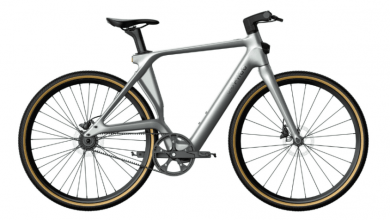How Remote Sensing Data is Revolutionizing Environmental Monitoring

The coming of Remote Sensing Data has denoted an extraordinary period in ecological checking, offering a formerly impossible extent of knowledge into Earth’s normal and synthetic conditions. Not only has this technological development revolutionized the manner in which environmental data is gathered and analyzed, but it has also significantly improved the accuracy and efficiency of data collection procedures. The significance of Remote Sensing Data lies in its capacity to give extensive and point by point viewpoints of the World’s surface, working with a more profound comprehension of climatic examples, land use changes, and natural debasement, among different applications.
This article will dig into the essentials of Remote Sensing technology, featuring the different kinds of Remote Sensing Data, their applications, and the near adequacy of various information sources. Further, it will investigate the most recent patterns in Remote Sensing technology and upgrading our abilities in natural monitoring future potential. By giving an intensive examination of these viewpoints, the article plans to offer perusers a complete outline of how Remote Sensing Data is upsetting the field of natural science.
Nuts and bolts of Remote Sensing technology
Remote Sensing technology catches information about Earth’s surface utilizing sensors that are not in that frame of mind with the area being contemplated. By measuring the reflected and emitted radiation of an area, typically from aircraft or satellites, this method allows for the detection and monitoring of the area’s physical characteristics. The crucial standard of remote detecting depends on the communication of electromagnetic radiation with surface materials and the environment.
Key parts of this innovation incorporate the wellspring of enlightenment (normally the sun), the sensors that record this energy, and the information handling offices that convert these perceptions into usable pictures. These sensors can distinguish energy in different structures, like apparent light, infrared, and microwave radiation, which are then examined to give important natural experiences.
Remote detecting is used for a large number of utilizations, from natural checking to metropolitan preparation and military insight. This innovation considers the broad perception of huge regions, improving our capacity to really oversee and safeguard normal assets.
Sorts of Remote Sensing Data
Remote Sensing technology uses different sorts of sensors to gather information about the World’s surface and environment. These sensors, mounted on stages like satellites, airplane, and robots, catch fundamental natural data.
Satellite Imagery
Satellite sensors provide extensive coverage, allowing for the capture of images of vast, far-off regions and the monitoring of large-scale events like urban growth and deforestation. These sensors work reliably, offering dependable information securing after some time, which is urgent for noticing dynamic ecological changes. The symbolism from satellites upholds various applications, including land use examination and debacle the executives, by giving itemized and authentic information that guide in long haul pattern examination.
Airborne Photography
Airborne photography, directed by means of airplane or robots, offers high-goal pictures that are important for itemized planning and natural observing. This technique considers the adaptable preparation of information procurement, adjusting to neighborhood weather patterns to guarantee lucidity and accuracy in the symbolism. Flying sensors can be furnished with different advances like multispectral and hyperspectral imaging, improving their utility in ecological applications, for example, vegetation and water body observing.
LiDAR Information
LiDAR (Light Location and Going) innovation utilizes laser heartbeats to make definite 3D portrayals of the overviewed regions. This information is especially helpful for figuring out the geology and construction of backwoods and metropolitan conditions. LiDAR gives high-goal point mists that are urgent for applications, for example, flood risk appraisal, backwoods the board, and metropolitan preparation. Its capacity to infiltrate overhang cover and give ground-level information makes it key for definite landscape examination.
Each of these remote sensing data types has distinct capabilities that are tailored to particular requirements and applications, making them a comprehensive environmental monitoring toolkit.
Uses of Remote Sensing Data
Remote Sensing Data altogether improves ecological checking, horticulture, metropolitan preparation, and catastrophe the board. In ecological observing, this innovation supports following deforestation, land use changes, and checking cataclysmic events, giving significant information to preservation endeavors. Horticulture benefits enormously from remote detecting; it upholds accuracy cultivating by observing harvest wellbeing, overseeing water system, and identifying nuisance invasions, accordingly improving horticultural efficiency and supportability.
Metropolitan arranging uses remote detecting for land use investigation and metropolitan change acknowledgment, assisting organizers with overseeing metropolitan development actually and economically. In catastrophe the executives, remote detecting is essential for crisis reaction, giving continuous information on rapidly spreading fires, floods, and other cataclysmic events, working with faster and more educated direction.
Aggregately, these applications exhibit the flexible and imperative job of Remote Sensing Data in overseeing and relieving ecological and human-made difficulties, featuring its significance across different areas.
Examination of Remote Sensing Data Sources
Satellite symbolism, airborne photography, and LiDAR information each deal novel benefits for natural checking, however their adequacy differs in light of geographic inclusion and goal, cost-viability, and administrative endorsements. Satellite symbolism gives broad inclusion and reliable information over the long haul, making it ideal for noticing enormous scope peculiarities and long haul changes. Nonetheless, the expense of sending off and keeping up with satellites can be huge, and the goal may not generally meet explicit nearby requirements.
High-resolution images from the air are essential for in-depth environmental assessments. This technique considers adaptability in information assortment, adjusting to explicit geographic and climatic circumstances. Albeit less expensive than satellite tasks, the size of inclusion is restricted and frequently affected by weather patterns.
LiDAR innovation hangs out in its capacity to produce exact 3D models of the World’s surface, fundamental for point by point geological examinations and metropolitan preparation. While offering high goal, LiDAR is by and large more costly than different strategies and requires refined handling procedures.
Administrative endorsements likewise assume a basic part, especially for satellite and LiDAR information. In the US, working a confidential remote detecting space framework requires a permit, and consistence with explicit guidelines is obligatory to guarantee the legitimate utilization of gathered information. The selection of data sources based on project requirements and legal constraints may be influenced by these regulations, which may affect the accessibility and distribution of remote sensing data.
Future Patterns in Remote Sensing technology
The scene of Remote Sensing technology is ready for extraordinary progressions, especially through the reconciliation of man-made brainpower (simulated intelligence) and upgrades in automated elevated vehicles (UAVs). As remote detecting advances catch information at higher goals and frequencies, the job of artificial intelligence turns out to be progressively significant. AI models are being refined to adjust to evolving situations, improving the precision of expectations and investigations. This collaboration is particularly powerful in hyperspectral imaging, which catches a more extensive scope of frequencies, giving nitty gritty data basic to areas like horticulture and ecological checking.
Besides, the development of UAV capacities denotes a critical pattern. These gadgets are presently ready to get to remote or unsafe regions effortlessly, lessening the time and work expected for ground overviews and expanding the effectiveness of information assortment. UAVs are outfitted with cutting edge sensors and imaging innovations that consider high-goal information catch, significant for nitty gritty natural evaluations and fiasco the board.
A shift toward more dynamic, real-time data processing and a greater emphasis on precision in environmental monitoring and resource management are reflected in these advancements. Remote sensing is expected to become even more important in global efforts to monitor and respond to changes in the environment as these technologies continue to advance.
Conclusion
Through this investigation of Remote Sensing Data and its groundbreaking job in natural checking, we’ve dove into the subtleties of different detecting advances and their applications, highlighting the huge effect this information has on our capacity to notice and answer ecological changes and difficulties. From satellite symbolism to LiDAR information, every technique offers novel experiences that are urgent for a wide cluster of areas, including metropolitan preparation, farming, and debacle the board. The development of these advancements, combined with progressions in simulated intelligence and UAVs, envoys a future where our ability to screen and deal with the World’s assets and conditions is particularly improved.
The ramifications of these advancements reach out a long ways past the quick advantages of further developed information exactness and productivity. They mean a significant shift towards more manageable and informed dynamic cycles across different fields. As we look to the future, the ongoing improvement of remote sensing technologies suggests that they will open up new possibilities for research and action. This highlights how crucial it is to use these tools in our collective efforts to preserve our natural world. This blend of innovation and natural stewardship remains as a demonstration of the capability of human inventiveness to encourage an additional reasonable and versatile future.





